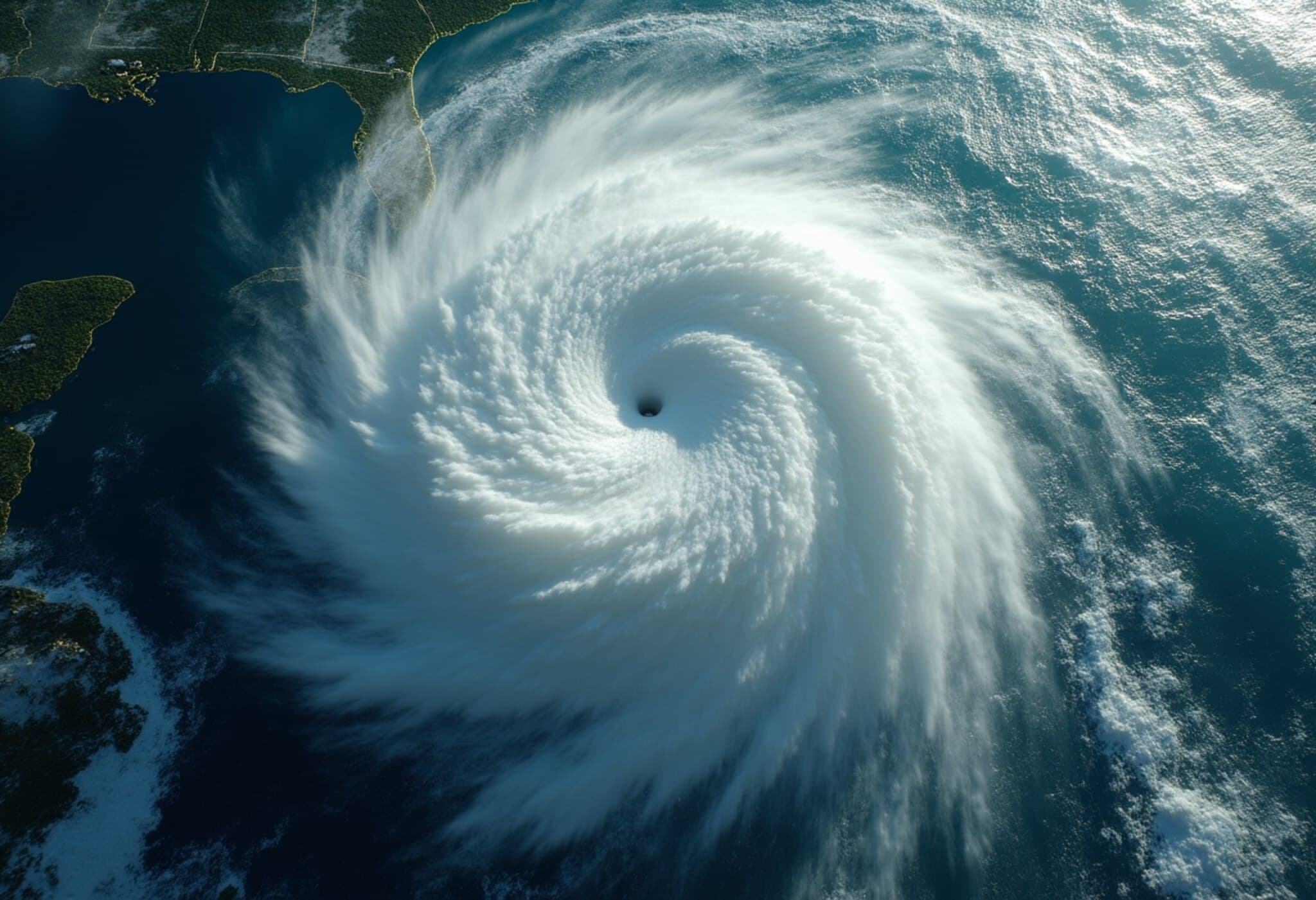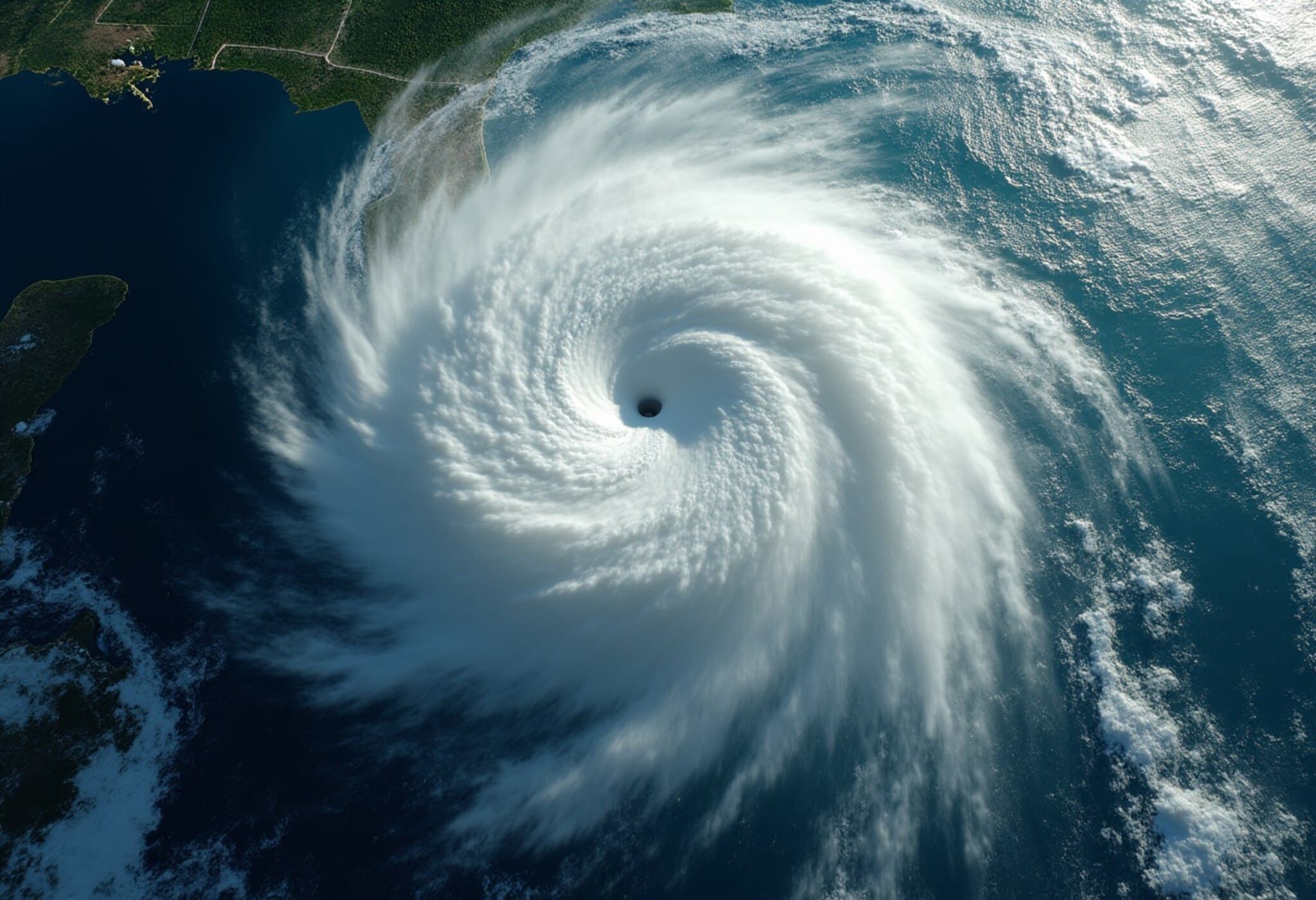Hurricane Erin Soars to Category 5, Unleashing Devastating Forces on the Caribbean
On Saturday, August 16, 2025, Hurricane Erin rapidly intensified offshore, reaching a catastrophic Category 5 status, with sustained winds exceeding 160 mph (255 km/h). This formidable storm has already battered several Caribbean islands with torrential rains and destructive winds, triggering urgent warnings for flash floods and landslides.
Rapid Intensification Raises Alarm Amidst Heightened Atlantic Season
As the first major hurricane of what meteorologists predict to be a particularly volatile Atlantic hurricane season, Erin’s swift escalation from Category 1 to Category 5 in just over 24 hours underscores a troubling trend linked to climate change. Experts emphasize that such rapid intensifications, once rare, are increasingly common due to warmer ocean temperatures fueled by human-induced global warming.
Geographic Impact: Caribbean Islands Brace for Severe Weather
Currently located roughly 135 miles northwest of Anguilla in the northern Leeward Islands—which includes the US and British Virgin Islands—Erin’s outer bands have already brought heavy rainfall prompting flash flood warnings in Saint Thomas and Saint John of the US Virgin Islands.
- Tropical storm watches were issued for St. Martin, St. Barthelemy, Sint Maarten, and the Turks and Caicos Islands.
- The hurricane is expected to track just north of the Leeward Islands, the Virgin Islands, and Puerto Rico over the weekend.
- It will likely skirt east of the Turks and Caicos Islands and the southeastern Bahamas before gradually weakening.
Forecasters warn that some locations could receive up to 6 inches (15 centimeters) of rain in isolated areas, raising serious risks of flash flooding, urban flooding, and mudslides.
Swells and Coastal Hazards Extend Impacts Beyond the Caribbean
Erin is generating powerful swells expected to impact a wide stretch of the Atlantic, from the northern Leeward Islands and Puerto Rico to the Bahamas, Bermuda, and even the US East Coast early next week. The National Hurricane Center (NHC) cautions about life-threatening surf and rip currents, particularly along North Carolina’s coastline, despite the storm staying offshore.
Broader Climate Context and US Preparedness
The 2025 Atlantic hurricane season is projected to be more active than usual, following a devastating 2024 season that included storms like Hurricane Helene, which claimed over 200 lives in the southeastern United States.
Adding complexity, the effectiveness of hurricane forecasting has come under scrutiny amid recent budget cuts and staffing reductions at the National Oceanic and Atmospheric Administration (NOAA). While these agency changes were part of broader federal government downsizing efforts, experts warn they could undermine timely storm monitoring and public safety warning dissemination.
Scientists widely attribute the increased intensity and frequency of hurricanes like Erin to rising sea surface temperatures driven by fossil fuel emissions. This climate-driven shift not only fuels storm formation but accelerates intensification processes, narrowing the window for communities to prepare.
Looking Ahead: Preparedness and Policy Implications
Though Erin is expected to weaken after making its closest approach to the Caribbean, the storm's trajectory and behavior demand vigilance. Emergency management officials in vulnerable island territories and along the US Atlantic seaboard continue to monitor developments closely.
This hurricane season also raises important policy questions about infrastructure resilience, climate adaptation, and the critical role of federal scientific agencies in safeguarding lives and property.
Editor's Note
Hurricane Erin’s rapid strengthening and widespread impacts embody the urgent intersection of climate change and disaster preparedness. As storms increase in intensity and unpredictability, communities in the Caribbean and along the US coastline face escalating risks. This dynamic calls for robust investment in early warning systems, resilient infrastructure, and aggressive climate mitigation strategies. How will policymakers reconcile budgetary constraints with the rising demands of climate-induced emergencies? And how can regional cooperation be enhanced to protect vulnerable populations? These pressing issues will define hurricane resilience in the years to come.



















